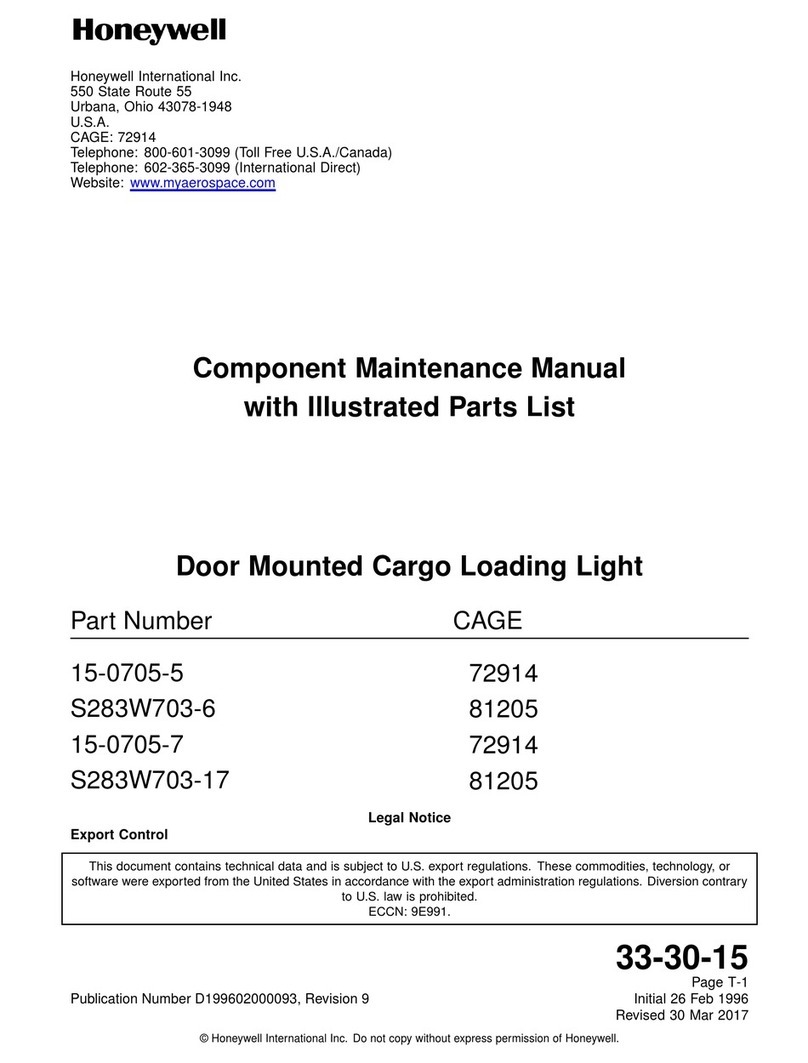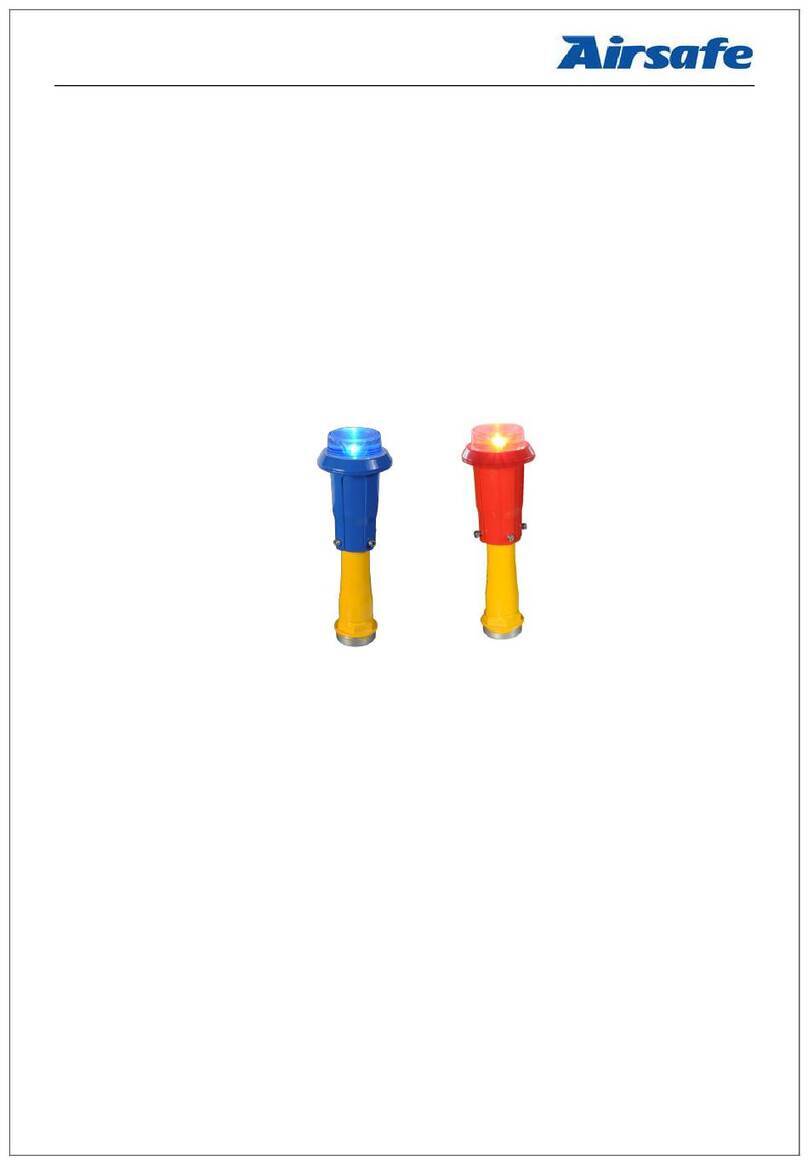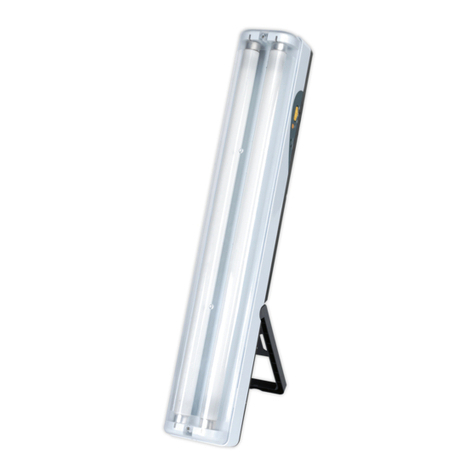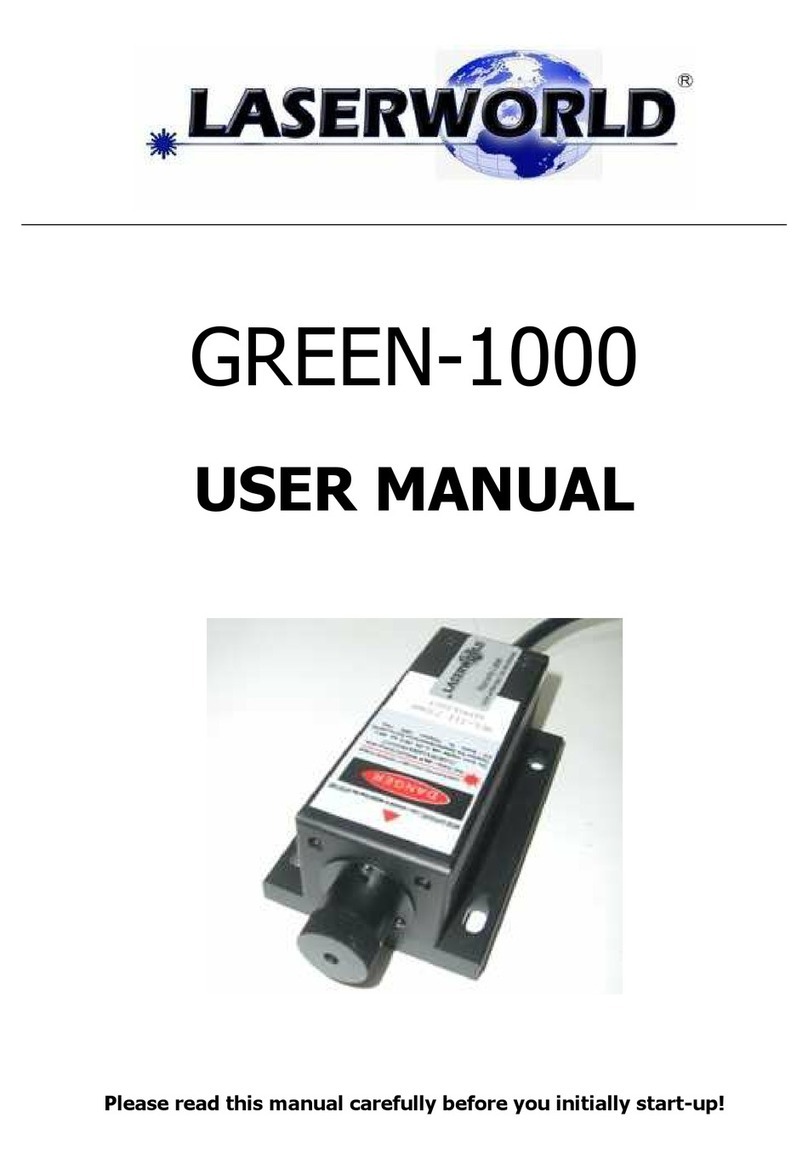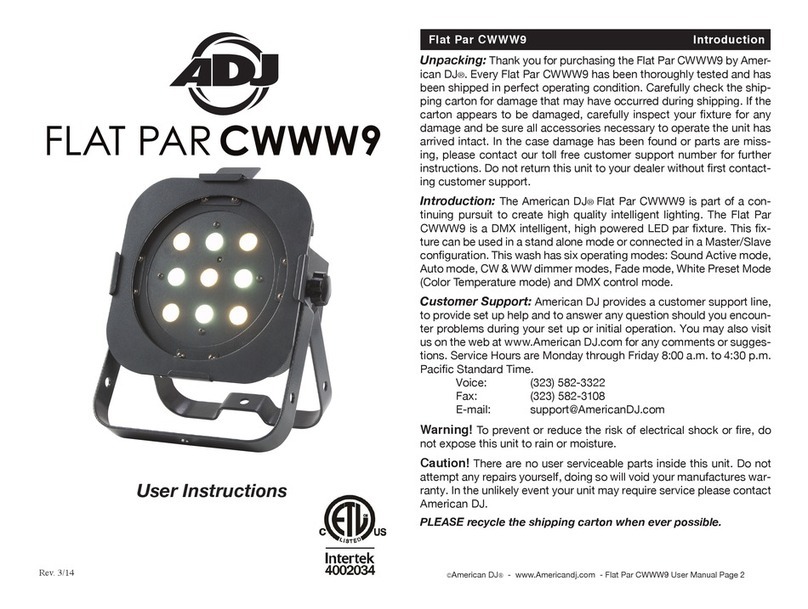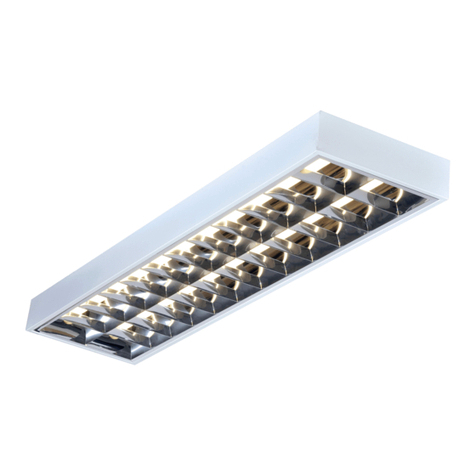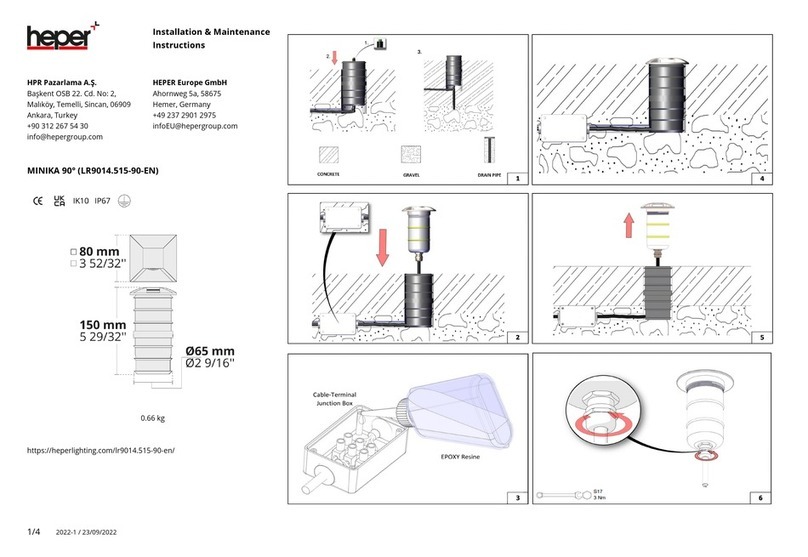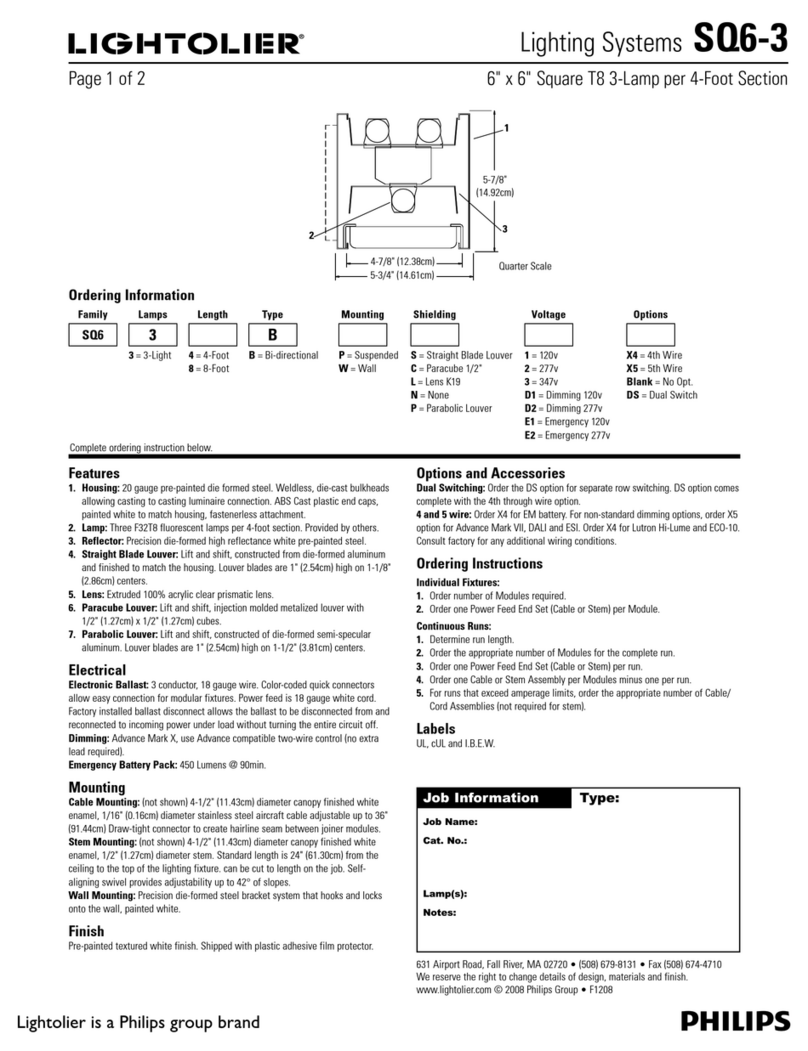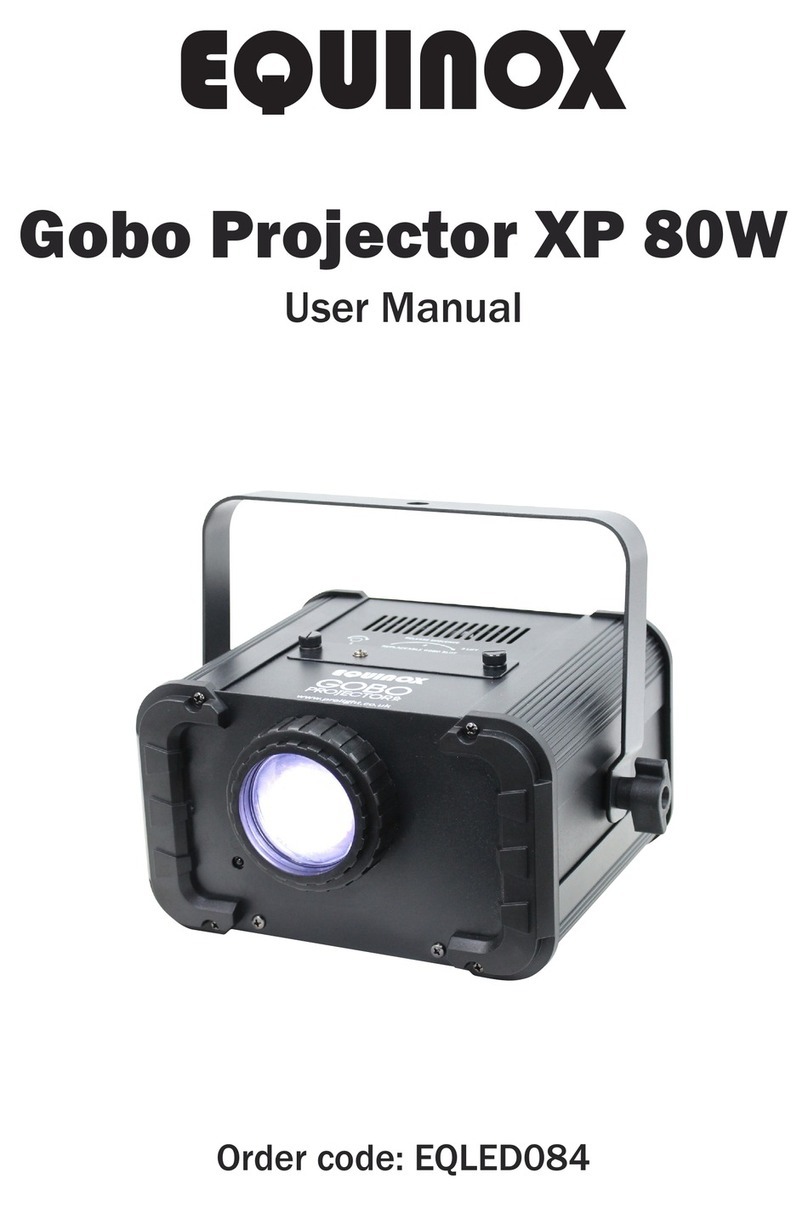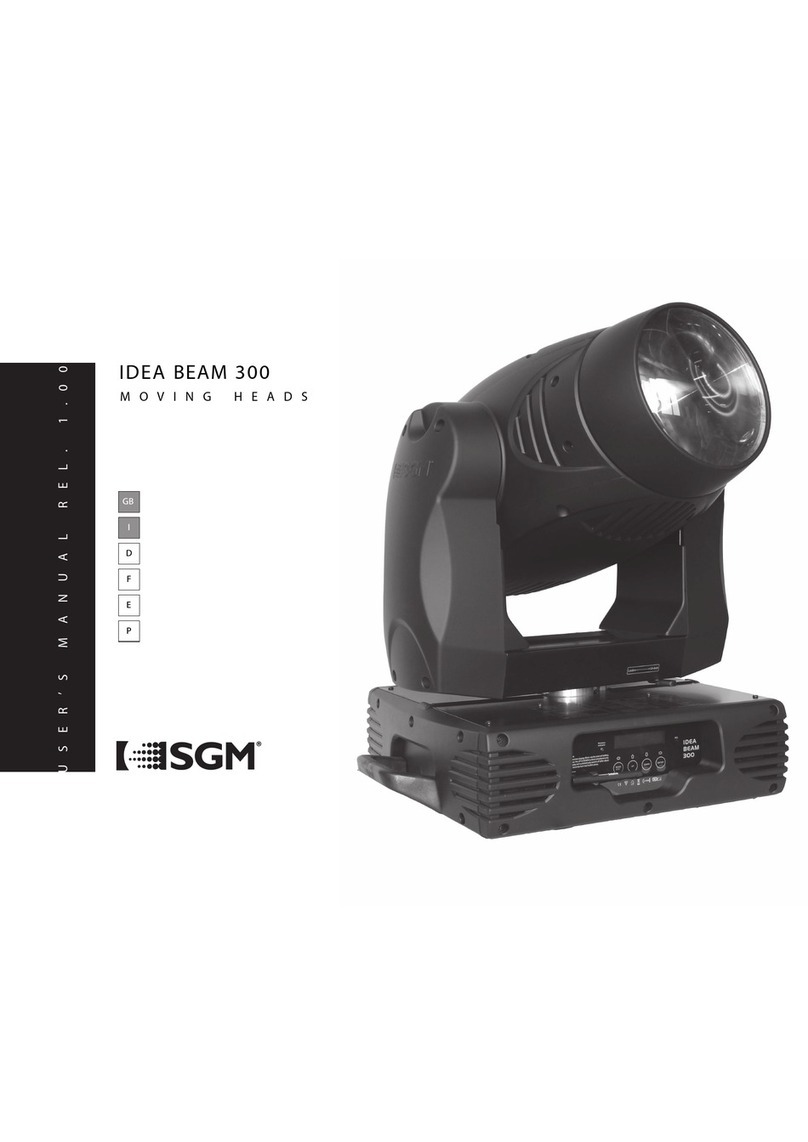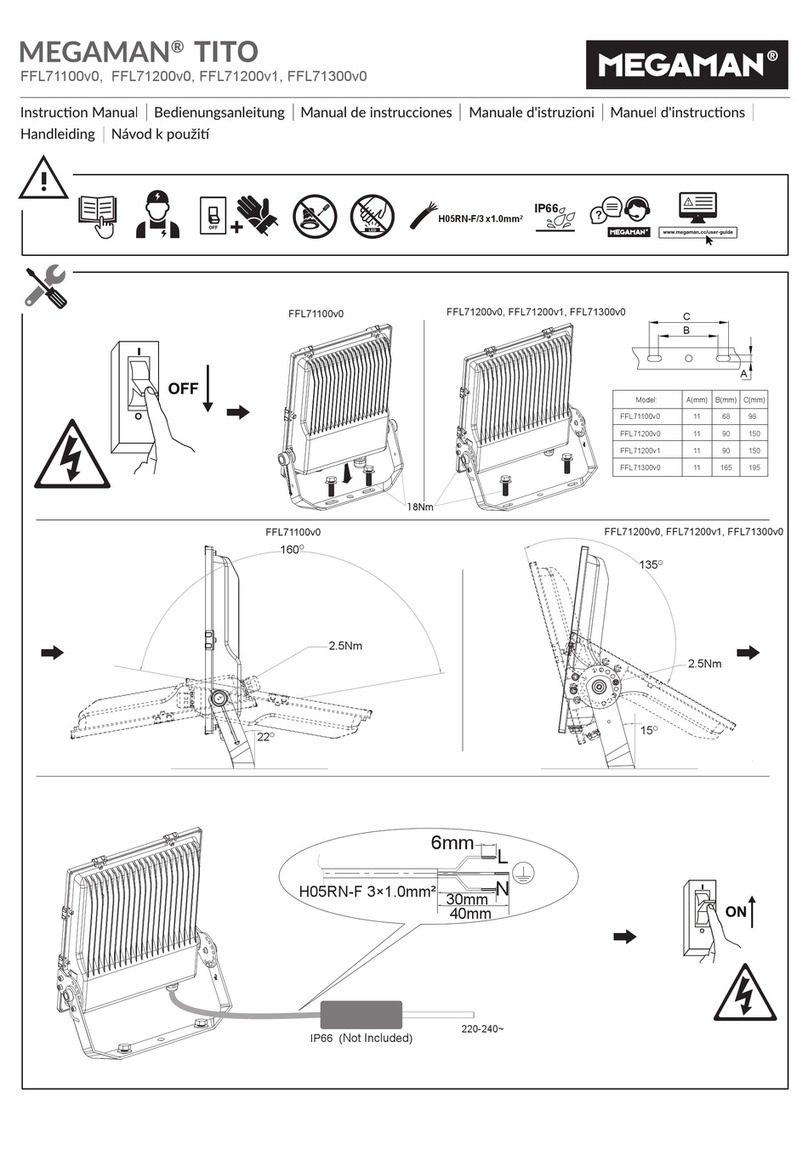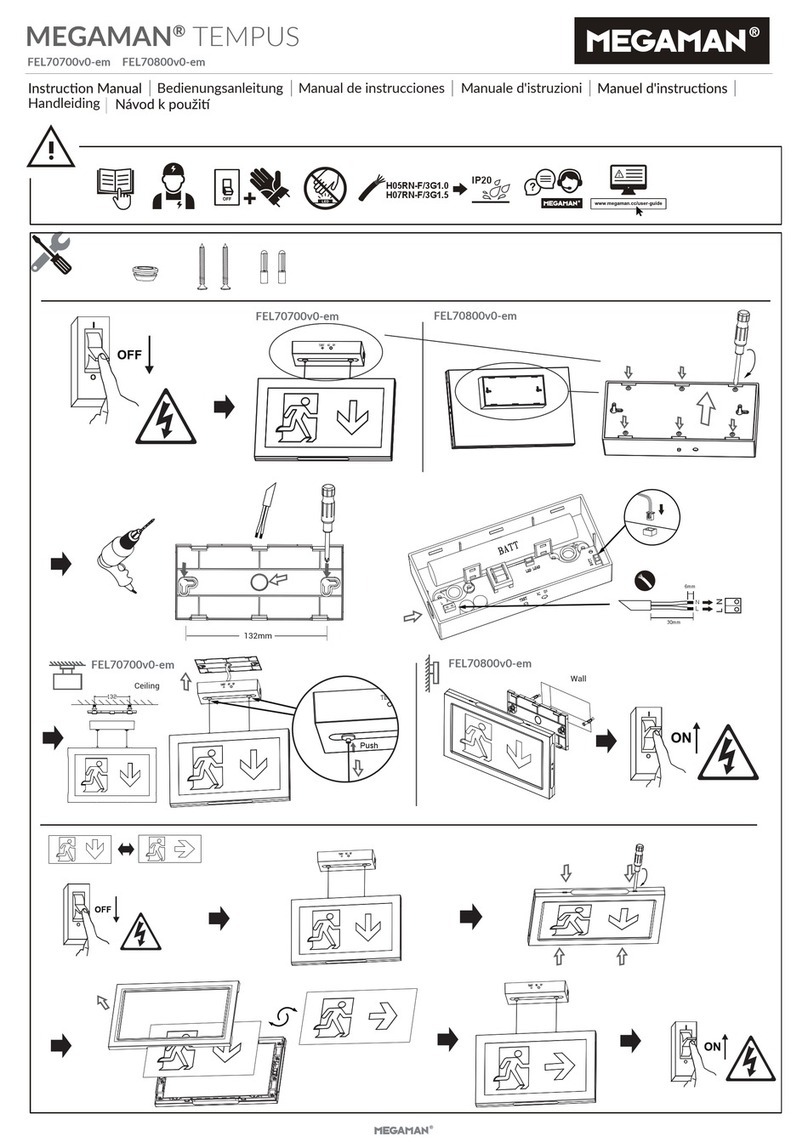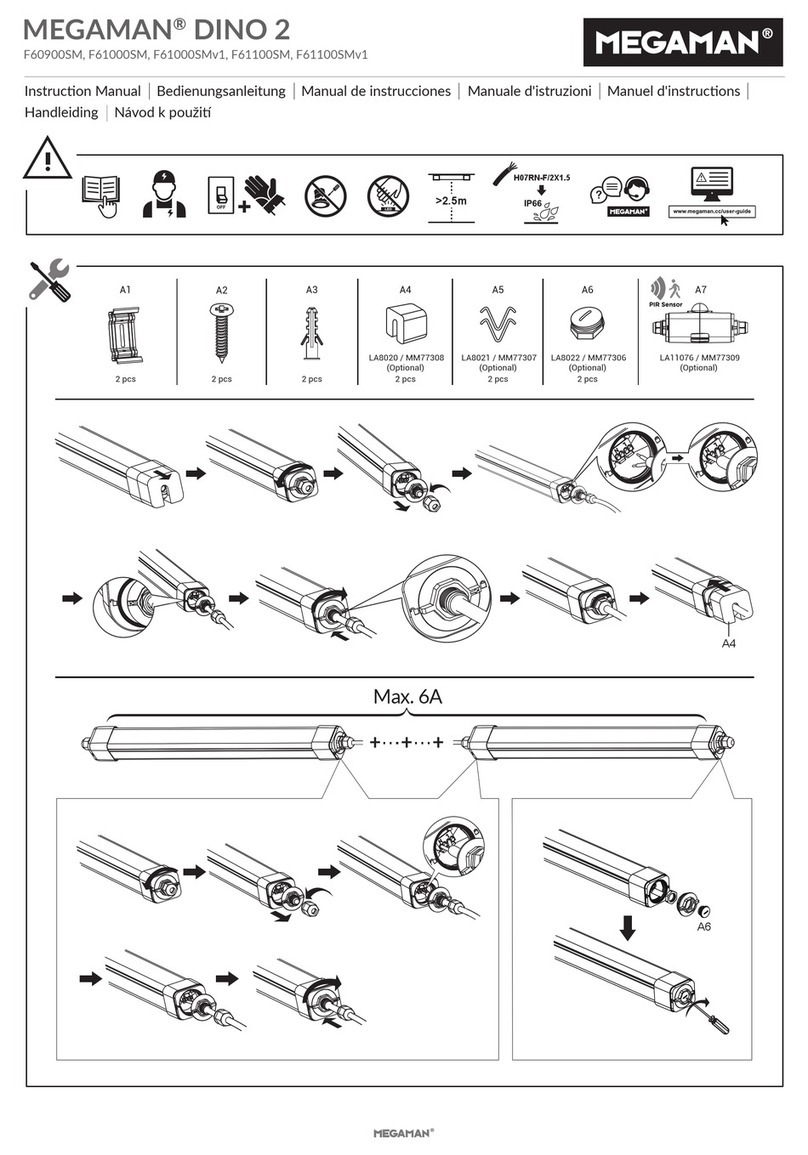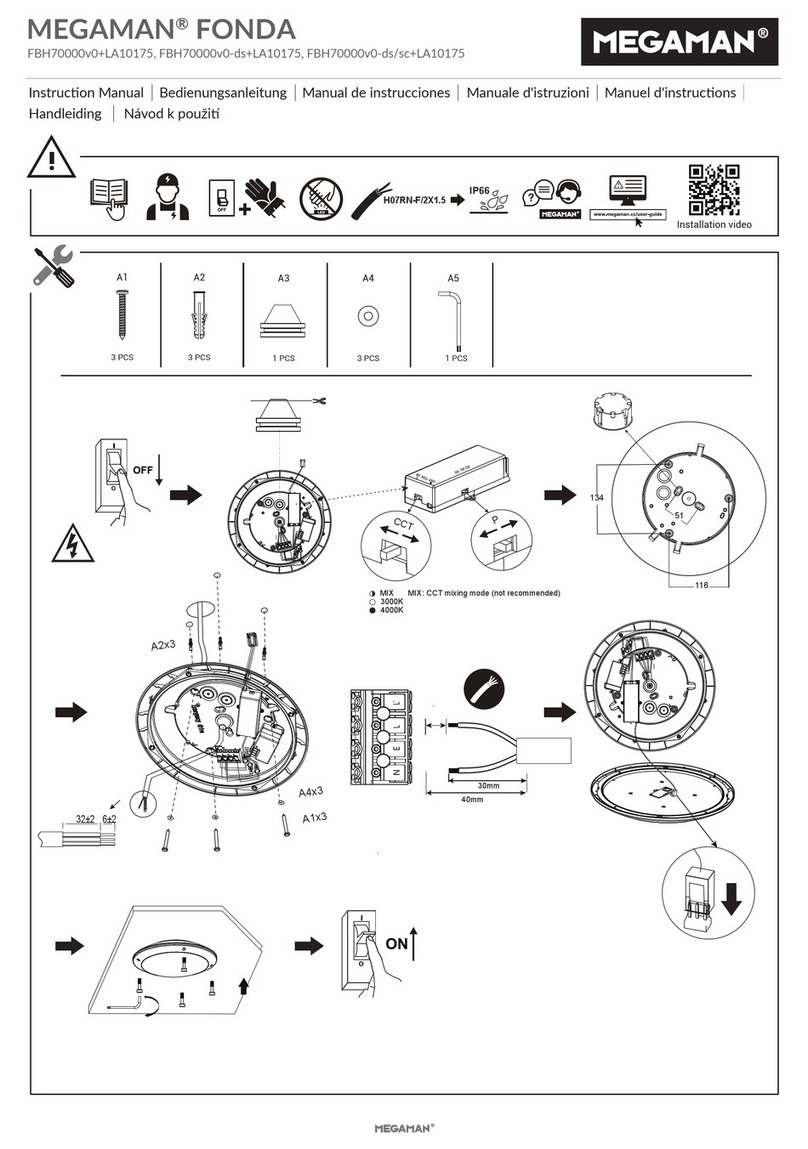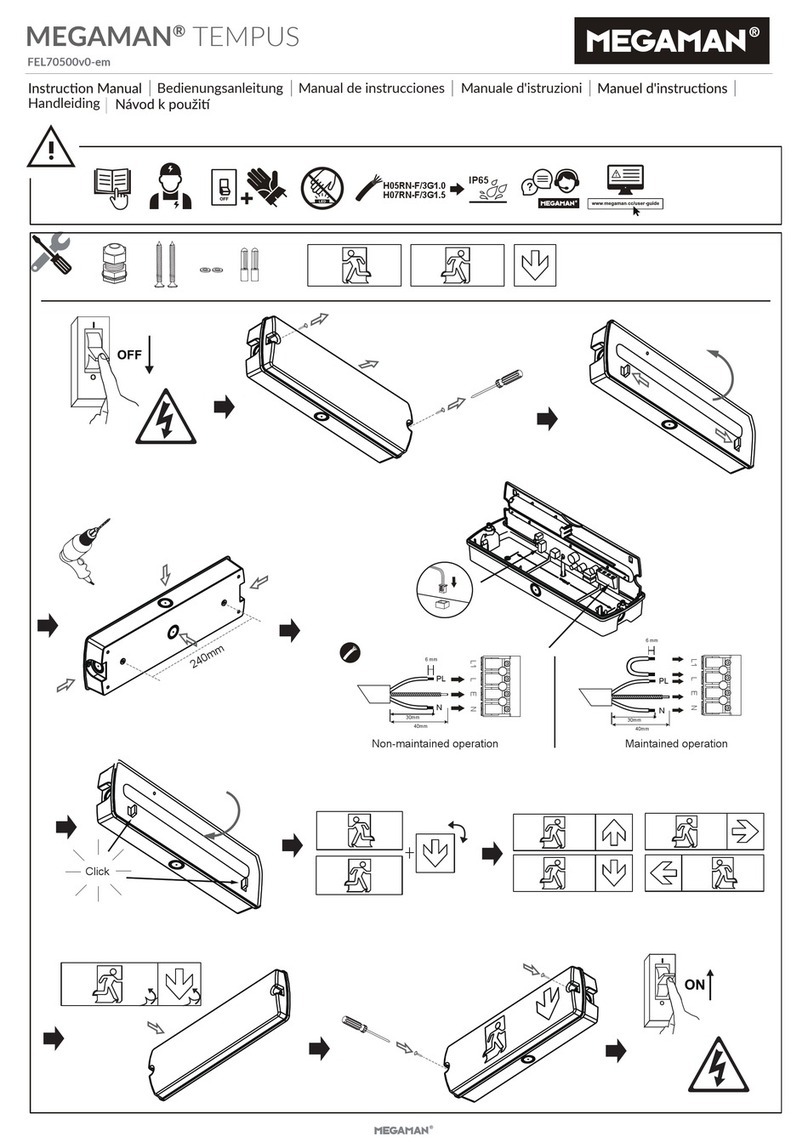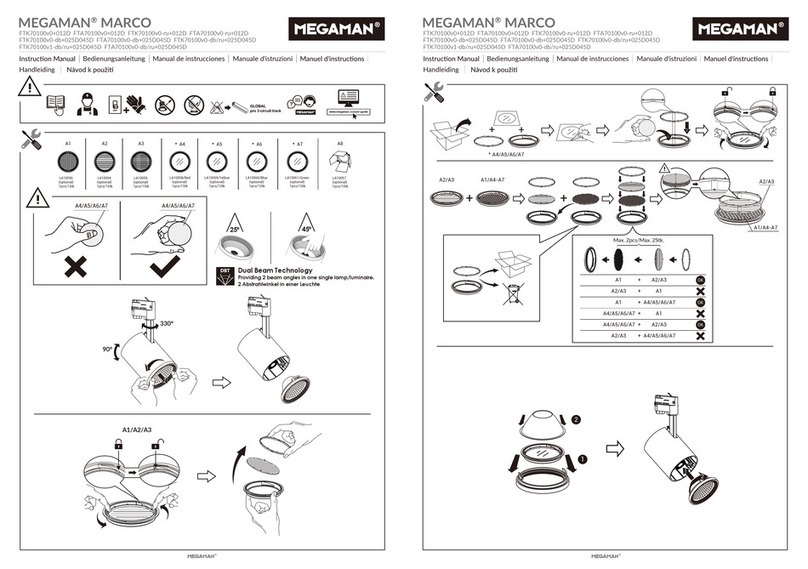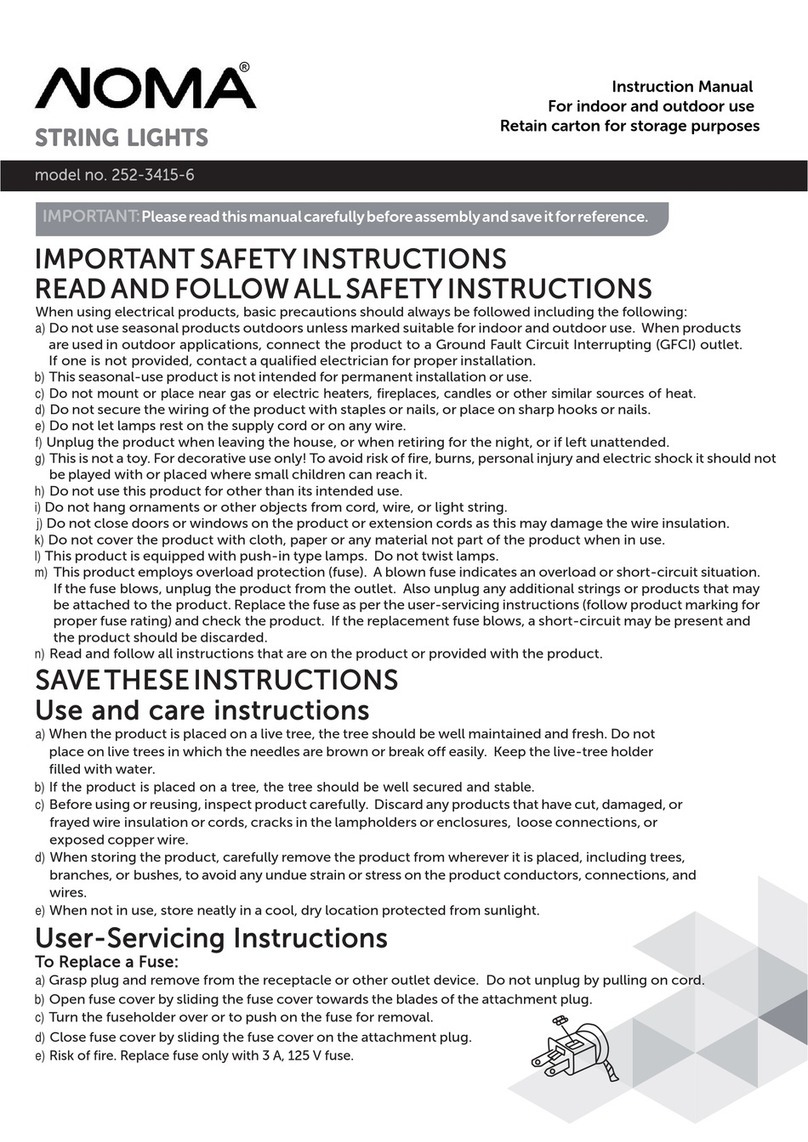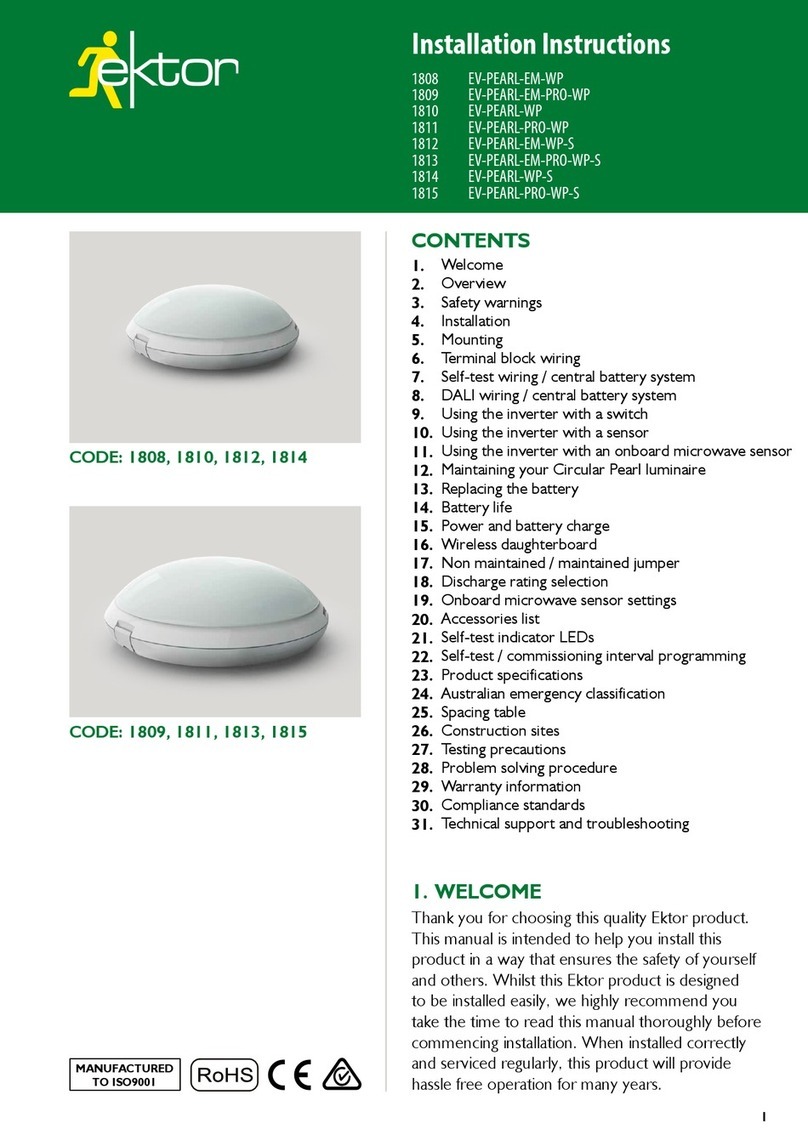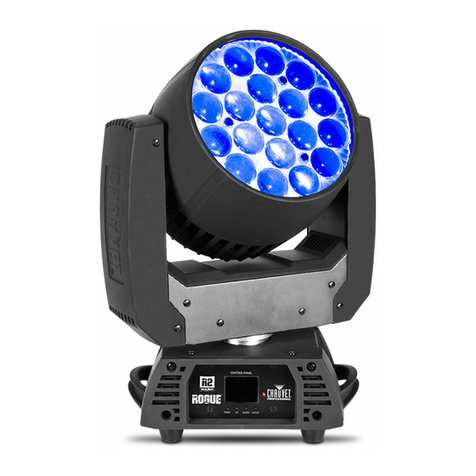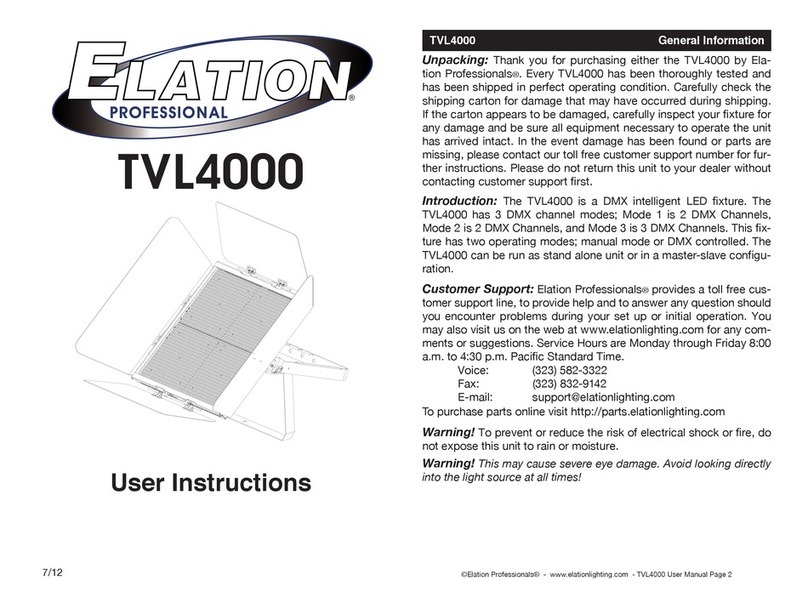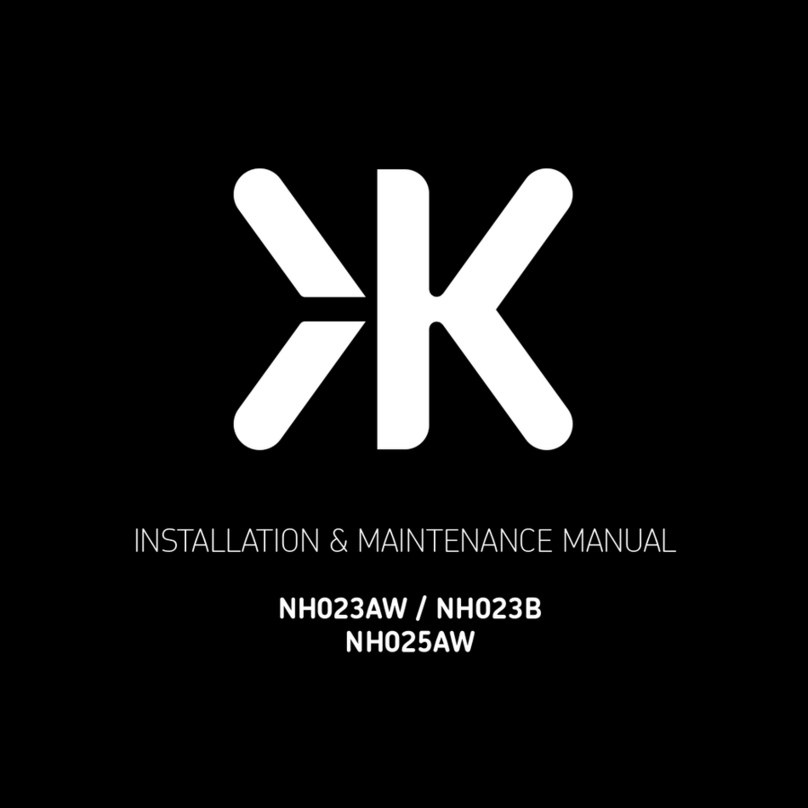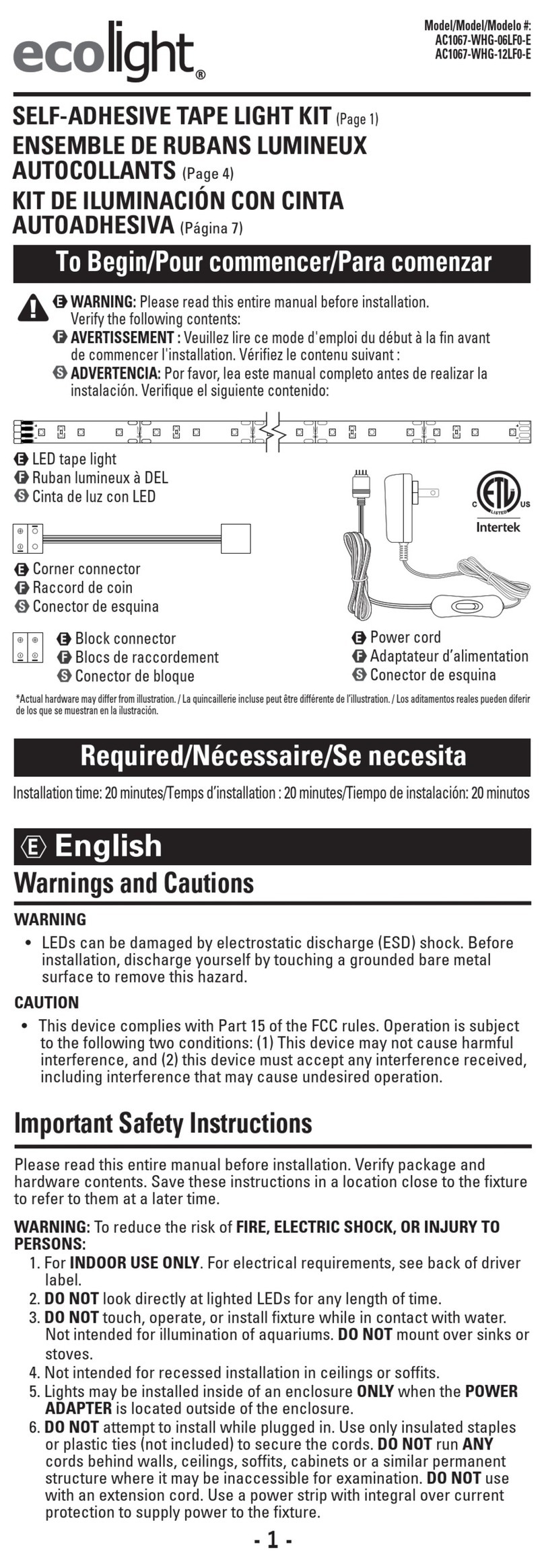
FEL70000v0-em
MEGAMAN®TEMPUS
Bedienungsanleitung Manuale d'istruzioniManual de instrucciones
Handleiding
IP65
220
- 240V
AC 50/60
Hz
FEL70000v0-em Ni-CD 12V 1500mAh 3h24h 6500K
ChargingPowerBaery Duraon CCT
300 82 294
Model
3.5W
L (mm)
Ni-CD
W (mm) H (mm)
1.All specifica ons are typically under 230VAC unless stated.
2.The emergency func on test must be performed when a ba ery is fully charged over 24 hours.
3.It is recommended to have full charge cycle for 24 hours in every 6 months.
4.A er first installa n of the fing, the ba ry must be charged for 24 hours.
The light source contained in this luminaire shall only be replaced by the manufacturer or his service agent or a similar qualified person.
De lichtbron in deze lamp mag alleen worden vervangen door de fabrikant, zijn serviceagent of een vergelijkbaar gekwalificeerd persoon.
DAILY: check charge indicators are lit maintained/combined lamps illuminate; any faults are recorded
MONTHLY: in addition to the daily check - a functional test of at least 3 minutes duration to confilm lamp is working on battery power by simulating a mains failure.
SIX MONTHLY in addition, to the daily check - a functional test of at least one hour to confirm lamp is working on battery power by simulating a mains failure.
ANNUALLY: in addition to the daily check - a functional test of rated duration to confirm full operation to specification by simulating a mains failure.
A copy of this report must accompany any fitting returned to the manufacturer for any reason.
EMERGENCY LUMINAIRE TEST RECORD
INSTALLATION ENGINEERS TEL
IDENT/SERIAL No
INSTALLATION DATE
LUMINAIRE TYPE
LOCATION
TEST
TYPE
FUNCTIONAL
FUNCTIONAL
FUNCTIONAL
1 HOUR
FUNCTIONAL
FUNCTIONAL
FUNCTIONAL
FUNCTIONAL
FUNCTIONAL
FUNCTIONAL
FULL DURATION
1 HOUR
1
2
3
5
6
7
8
9
10
11
13
12
SIGN
MONTH
DATE
SIGN
DATE
SIGN
DATE
SIGN
DATE
SIGN
DATE
FIRST
YEAR
SECOND
YEAR
THIRD
YEAR
FOURTH
YEAR
FIFTH
YEAR
FUNCTIONAL
4
W
H
L
Guidance notes for twin spot emergency luminaire.
These instructions contain important information regarding
safety. They should be read carefully and retained at the
installation for future reference. The company will not accept any
responsibility for any injury, damage or loss which may arise as
a result of incorrect installation, operation or maintenance due to
non-adherence to these instructions.
This self-contained emergency twin spot luminaire is suitable for
environments with ambient temperatures between 0°C to 40°C.
Do not carry out high voltage insulation testing on the luminaire
as this will damage the circuitry.
Emergency luminaires should only be connected to a stable
permanent electrical supply. Frequent supply interruptions will
result in damaging "Charge/Discharge" cycling of the luminaire,
which will invalidate any guarantees. The battery must only be
charged within the luminaire.
There are two LED indicators visible externally on the front of
the casing. Upon energisation, both should illuminate. The
upper of the two LED indicators confirms charge is flowing to
the battery. The lower confirms the supply is reaching the
luminaire. Both should be visually checked regularly, preferably
daily. On a monthly basis, the supply to the luminaire should
be removed to check the operation in emergency mode and
both LED indicators will extinguish when operating in
emergency mode and the twin spot lights will illuminate.
If the lighting output fails to last for three hours in emergency
mode, the battery pack should be replaced.
Maintenance
Repairs should only be carried out by suitably qualified
persons. Only replacement components authorised by the
company should be used. Disposal of replaced components
should be in accordance with prevailing regulations..
Special care should be taken if it is required to open the
luminaire, as it may still be "live" even though the mains
supply has been disconnected. In these circumstances
dis-connect the battery.
Servicing, cleaning etc, should only be carried out after the
luminaire has been made electrically safe. Cleaning of
luminaires should be carried out at regular intervals not only
to ensure good optical performance but also to ensure that
dirt does not accumulate to such an extent as to impair the
electrical or thermal safety of the luminaire.
